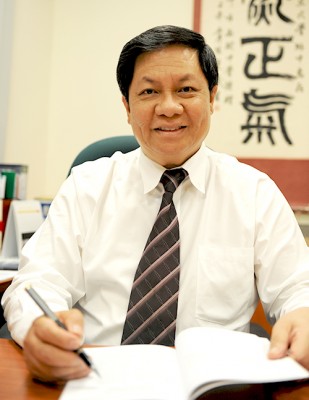Why Singapore’s English Teachers Should Embrace Singlish, Not Fight It
Is it time for Singaporean educators to embrace Singlish as a legitimate learning tool? What the Research […]
Read More
In this article, Dr Hang Kim Hoo, the Principal of the NUS High School of Mathematics & Science shares his views on math education in Singapore and suggests future directions for both learning and teaching.

As both a Math educator and practising mathematician, I have held the simple slogan “Learn, Do and Use Mathematics” close to my heart. I had formulated the slogan while attempting to sort out and make sense of the views, exchanges, exhortations and insights among distinguished mathematicians and Math educators at the 2011 London Mathematics Education Summit, which was held at the Royal Institution.
This slogan has since provided me with a simple way to ensure that each time I am engaged in thinking about anything related to Math, I am able to mindfully keep a comprehensive and holistic view of the world of Math.
Indeed, at the heart of learning Math, it is always about learning correctly, accurately, comprehensively and competently, so that one will acquire the competencies and capacity to engage in lifelong and self-directed learning in Math.
This will then enable one to go on to do Math – to explore, build and develop new mathematical knowledge and tools (in the world of pure Math), and to use Math – to solve a whole range of real-world problems using Math in tandem with knowledge from other disciplines (in the world of applied Math and mathematical modeling). Only then would one be able to appreciate the value, nature and beauty of Math.
In the world of Math, there is always a place for everyone. Engaging and leading our students in learning Math in schools should be a microcosm of the Math world described above. In fact, the current Singapore Mathematics Education Framework provides for that.
First introduced and adopted in 1990, and refined a number of times, it has enabled the development of the enacted Math curriculum in Singapore schools over the years and served the Singapore education system very well.
It is noteworthy that as a nation, Singapore has done well in international Math benchmark studies (TIMSS and PISA) as well as at the peaks (Singapore has consistently been among the top 10 nations at the International Mathematical Olympiad since 2011).
Notwithstanding these achievements, there is still room for improvement in providing a total learning experience in Math for all our students.
Besides developing proficiency in mathematical conceptual understanding, skills and problem solving, there is room to discover how the various mathematical processes like reasoning, communication and connection making can be weaved more coherently to develop productive mathematical habits of mind.
In the world of Math, there is always a place for everyone.
– Dr Hang Kim Hoo, NUS High School of Mathematics and Science
At the same time, the introduction of the mathematical modelling process framework in 2010 by MOE should be leveraged upon as a platform to provide opportunities for students to use Math to unravel or even solve real-world problems in science, technology and social science contexts. Many of these problems can be made accessible to all students by varying the underlying conditions and assumptions, as well as making the contexts appropriate. The development of 21st century competencies can be woven in as well.
To take the next big step forward, continuous professional development for Math teachers has to focus on both content mastery and instructional strategies. The role of the Math teacher has evolved, shifting from one who presents content to one who enables students to learn how to learn, through the holistic development of mathematical knowledge, skills, competencies and productive habits of mind. In particular, content mastery among Math teachers will be critical as improving disciplinary mastery improves one’s access to a wider repertoire of pedagogies.